
Fundamentals
The concept of ‘Hair Culture’ represents a profound, living archive, particularly when considering the diverse experiences of textured hair, especially within Black and mixed-race communities. This term extends beyond mere aesthetics or styling practices; it embodies the collective beliefs, rituals, historical narratives, and communal expressions tied to hair within a given group. For Roothea, understanding Hair Culture means tracing the lineage of care, the echoes of ancestral wisdom, and the inherent connection between a strand of hair and the soul it adorns. It serves as a statement of identity, a vessel of memory, and a testament to resilience, deeply rooted in the biological reality of textured hair and its ancient origins.
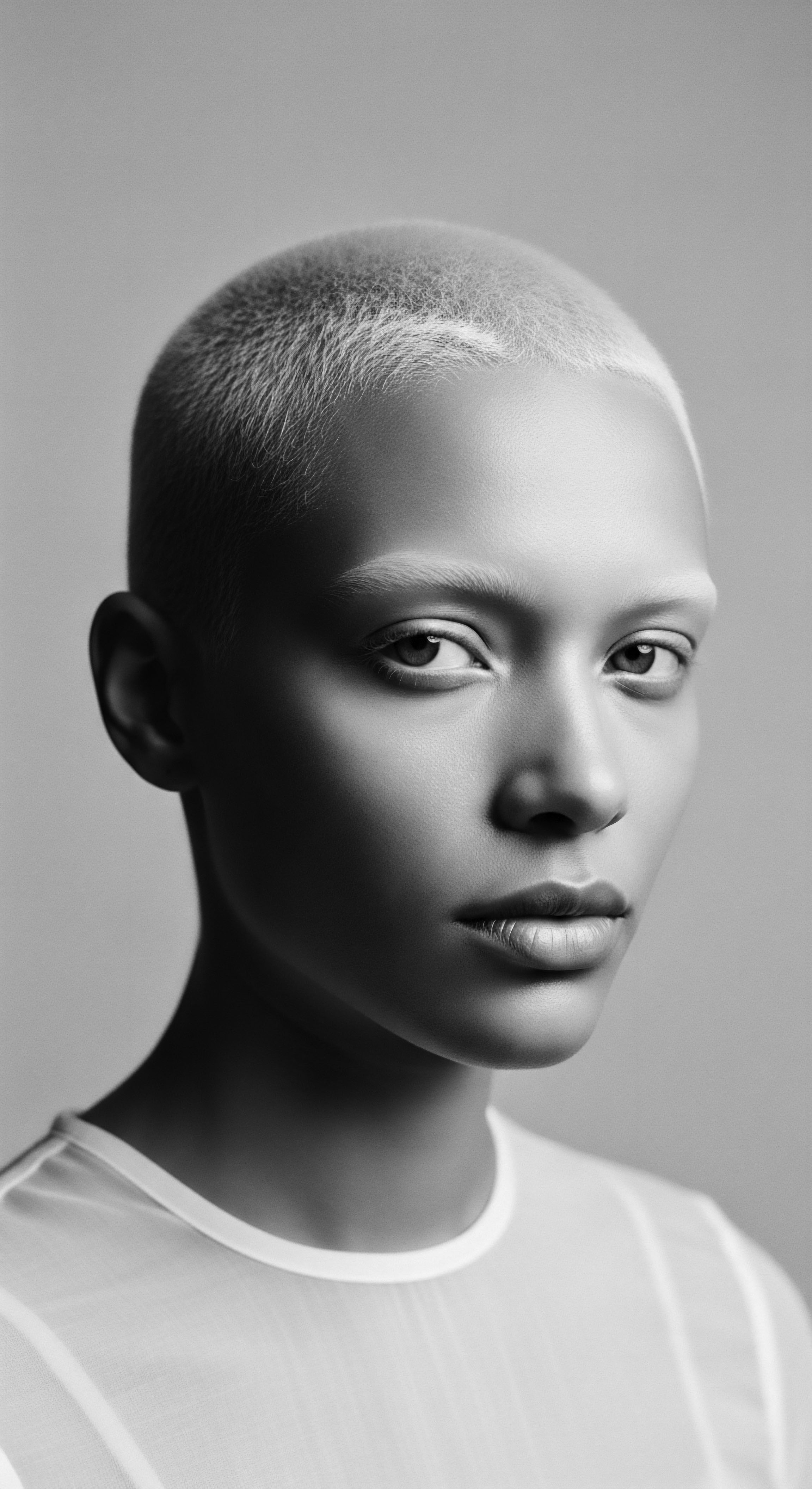
The Ancestral Strand ❉ Early Echoes of Hair Culture
From the earliest human settlements, hair served as more than a biological covering; it functioned as a canvas for communication, a marker of belonging, and a conduit for spiritual connection. Archaeological evidence from various ancient African civilizations reveals elaborate hairstyles and adornments, signifying social status, age, marital standing, and even religious beliefs. Ancient Egyptian depictions showcase intricate wigs and braids, often indicating hierarchy and divinity. This practice was not confined to royalty; ordinary individuals participated in hair styling as a communal and personal act, reinforcing social bonds and collective identity.
The practice of hair care in these early societies was often a communal event, fostering deep connections among family members and within communities. Mothers, sisters, and friends would gather, engaging in the intimate ritual of braiding, twisting, and oiling hair. These sessions served as spaces for sharing stories, transmitting oral histories, and passing down traditional knowledge across generations. Such gatherings were not simply about beautifying the hair; they were sacred spaces of learning and cultural preservation.
Hair Culture, particularly for textured hair, is a living testament to ancestral wisdom, interwoven with identity and communal bonds.

Biology as Oracle ❉ The Intrinsic Design of Textured Hair
The unique biological characteristics of textured hair – its distinct curl patterns, varying porosity, and diverse densities – shaped ancestral hair care practices from the very beginning. Unlike straight hair, coiled and kinky textures require specific care to maintain moisture and prevent breakage. Ancient communities recognized these inherent needs, developing methods and using natural resources that honored the hair’s structure. This deep observation of nature informed the creation of nourishing oils, protective styling techniques, and gentle cleansing rituals, all designed to work harmoniously with the hair’s natural inclinations.
For example, the application of various plant-derived oils and butters, such as shea butter or coconut oil, provided essential moisture and protection against environmental elements. These substances, readily available in their natural environments, became foundational to hair health, reflecting an intuitive understanding of hair biology long before modern scientific classification. The reverence for the hair’s natural state, recognizing its intrinsic beauty and resilience, laid the groundwork for a Hair Culture that celebrates its authentic form.
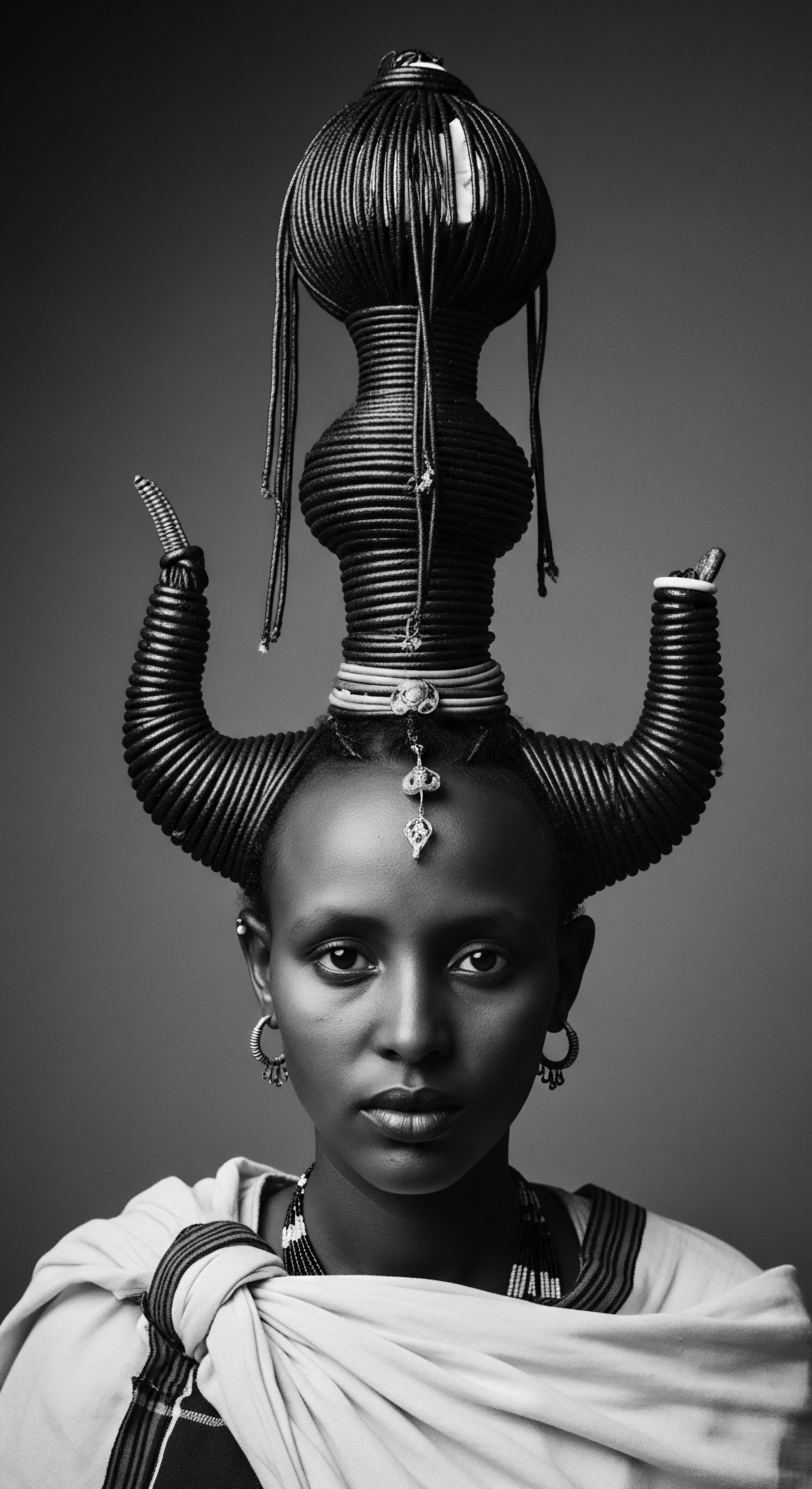
First Communions of Care ❉ Rituals and Tools
The rituals surrounding hair care in ancient societies were deeply ceremonial, reflecting the profound respect held for hair as a sacred part of the self. Tools used were often crafted from natural materials like wood, bone, or shells, designed with specific textured hair needs in mind. Combs and picks, for instance, were not merely functional items but extensions of the hands that tended to the hair, facilitating detangling and styling without causing undue stress.
Specific traditional hairstyles, such as various forms of braids and twists, served practical purposes beyond their symbolic ones. They protected the hair from the elements, minimized tangling, and allowed for long-term wear, especially beneficial for demanding daily tasks in rural communities. The meticulous artistry involved in these styles speaks to a profound understanding of hair as a medium for self-expression and cultural storytelling, where each pattern could signify lineage, social standing, or a personal journey.
This foundational understanding of Hair Culture, steeped in the earliest practices of humanity, offers a powerful lens through which to view its ongoing evolution, particularly for those whose heritage is intertwined with textured hair. It reveals a timeless connection between the physical self, community, and the ancestral past.

Intermediate
The intermediate understanding of ‘Hair Culture’ moves beyond its foundational meaning to explore how heritage practices involving textured hair have been passed down, adapted, and sometimes fiercely protected across generations and geographies. This layer of comprehension focuses on the dynamic interaction between traditional knowledge and the evolving socio-political landscapes, particularly within the African diaspora. Hair Culture, in this context, becomes a living tradition, a repository of ancestral memory, and a vibrant expression of identity that continuously redefines itself.
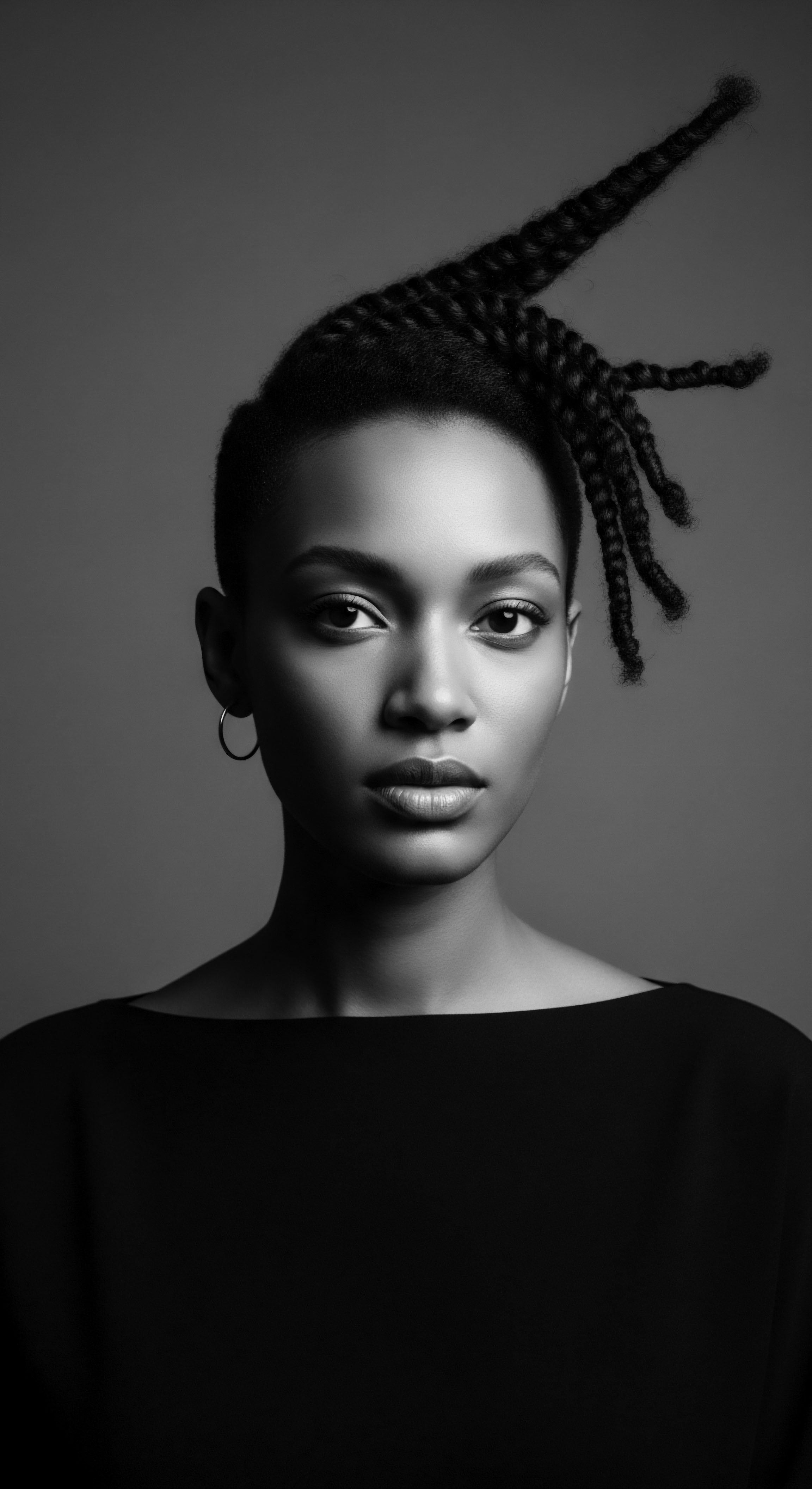
The Diasporic Bloom ❉ Hair as a Chronicle of Survival
The transatlantic slave trade severely disrupted African societies, forcibly displacing millions and attempting to strip them of their identities. One of the first acts of dehumanization inflicted upon enslaved Africans was often the shaving of their heads, a deliberate attempt to erase their cultural identity and sever their connection to ancestral practices. Yet, despite these brutal efforts, the traditions and customs associated with hair persevered, adapting in secret and serving as powerful symbols of resistance and resilience.
Enslaved people began braiding their hair again, not only to reconnect with their African roots but also for survival. Braiding patterns, often specific to various regions and ethnic groups, became a means to identify and differentiate between communities, even in the absence of spoken language. There are accounts of enslaved African women braiding seeds, sometimes even gold, into their hair before forced voyages, a means of carrying sustenance and hope for survival into the unknown.
Consider the historical example of the Tignon Laws enacted in New Orleans in 1786 by Spanish Governor Esteban Rodríguez Miró. These sumptuary laws mandated that free Black women cover their hair with a tignon, a headscarf, ostensibly to curb their perceived “excessive luxury” and visually mark them as belonging to the enslaved class, whether free or not. Yet, these women, with remarkable ingenuity and defiance, transformed the tignon into a statement of high fashion and distinction.
They crafted elaborate, vibrant headwraps from the finest fabrics, adorning them with jewels, ribbons, and feathers, thereby subverting the law’s intent and converting a symbol of oppression into one of enduring beauty and cultural pride. This act speaks volumes about the indomitable spirit of Hair Culture as a tool for self-expression and resistance in the face of systemic attempts to suppress it.

Alchemy of the Earth ❉ Traditional Ingredients and Their Significance
The ancestral wisdom concerning natural ingredients forms a cornerstone of Hair Culture for textured hair. Generations passed down knowledge about the properties of plants, oils, and minerals, transforming them into potent elixirs for hair health. These ingredients were chosen not only for their biological efficacy but also for their symbolic and spiritual resonance.
- Shea Butter ❉ Derived from the nuts of the African shea tree, this rich butter provided deep moisture and protective qualities, shielding hair from harsh climates. Its use spans centuries, symbolizing nourishment and care.
- Various Natural Oils ❉ Coconut oil, marula oil, and argan oil were utilized for their conditioning properties, adding luster and softness to coiled strands. Each oil carried specific regional or communal significance.
- Herbal Infusions ❉ Ingredients like rooibos tea from South Africa or the Chébé powder from Chad were incorporated for their fortifying and growth-promoting attributes, demonstrating an advanced understanding of botanical benefits.
- Rhassoul Clay ❉ This mineral-rich clay from Morocco served as a gentle cleanser, purifying the scalp and hair without stripping natural oils, a practice that anticipates modern non-sulfate cleansing methods.
These natural elements represent a holistic approach to hair care, where wellness extends beyond the physical to encompass spiritual well-being and connection to the earth. The careful selection and preparation of these ingredients speak to a deep reverence for the natural world and its gifts.
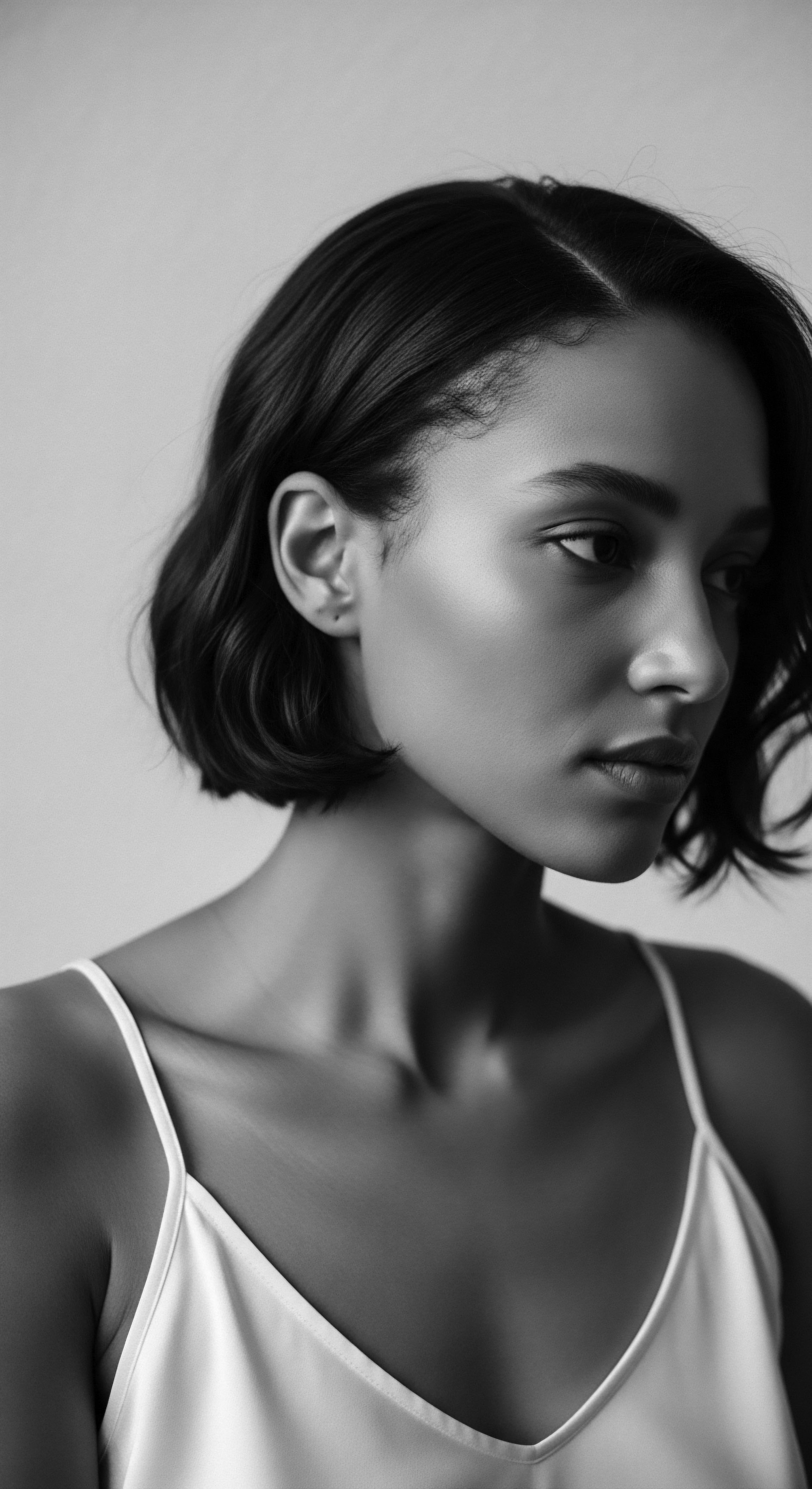
Hands of Legacy ❉ The Transmission of Care Techniques
The practical application of Hair Culture rests upon the skilled hands that have preserved and transmitted traditional techniques. Braiding, twisting, and locing are not merely styling methods; they are sophisticated art forms, each carrying a unique history and cultural significance.
| Technique Braiding (e.g. Cornrows) |
| Historical Significance / Ancestral Practice Ancient origins in Africa, signifying age, marital status, tribal affiliation, wealth, and sometimes used for covert communication (e.g. escape routes during slavery). |
| Contemporary Relevance / Benefits Protective styling, minimizing manipulation, promoting length retention, cultural expression, and artistic versatility. |
| Technique Twisting (e.g. Two-strand twists) |
| Historical Significance / Ancestral Practice Found across various African cultures, a gentler alternative to braiding, often used for setting hair or creating a base for other styles. |
| Contemporary Relevance / Benefits Low-tension styling, moisture retention, definition for curl patterns, and a foundation for twist-outs or other defined styles. |
| Technique Locing (Dreadlocks) |
| Historical Significance / Ancestral Practice Ancient spiritual and cultural significance in many African communities (e.g. Maasai, Rastafarianism), symbolizing connection to the divine, nature, or specific rites of passage. |
| Contemporary Relevance / Benefits Long-term protective style, symbolizing identity, spiritual grounding, and minimal daily manipulation once established. |
| Technique Hair Threading (Irun Kiko) |
| Historical Significance / Ancestral Practice A West African practice, particularly among the Yoruba, dating to the 15th century, used to stretch hair and protect it from breakage. |
| Contemporary Relevance / Benefits A gentle, heat-free method for stretching and lengthening textured hair, preserving its health and elasticity. |
| Technique These techniques represent a continuum of care, adapting to new environments while retaining their core meaning and function for textured hair. |
The knowledge of these techniques was often passed down through direct mentorship, from elder to younger, creating an unbroken chain of heritage. This intergenerational transfer of wisdom underscores the profound communal aspect of Hair Culture, where the act of styling hair is an act of preserving and honoring one’s lineage.

Beyond the Veil of Assimilation ❉ Hair as Resistance
The journey of Hair Culture in the diaspora is also a narrative of overt and subtle resistance against Eurocentric beauty standards. For centuries, Black people were subjected to immense pressure to alter their natural hair textures to conform to dominant societal norms, often involving harsh chemical relaxers or heat treatments. This pressure was not merely aesthetic; it was deeply tied to perceptions of professionalism, social acceptance, and even personal worth.
The emergence of the Natural Hair Movement in the 1960s, intertwined with the Civil Rights and Black Power movements, marked a significant reclamation of ancestral identity. The Afro, a voluminous natural style, became a powerful symbol of Black pride, unity, and defiance against oppression. It represented a conscious rejection of imposed beauty ideals and a profound affirmation of self-love and solidarity within the Black community. This period saw individuals choosing to wear their natural kinks and coils as a political statement, demonstrating that hair was, and remains, a potent vehicle for social commentary and cultural liberation.
This intermediate exploration reveals Hair Culture as a dynamic, living entity, shaped by historical forces, yet continually asserting its heritage through acts of preservation, adaptation, and profound self-definition. It speaks to the enduring spirit of textured hair and the communities that celebrate it.
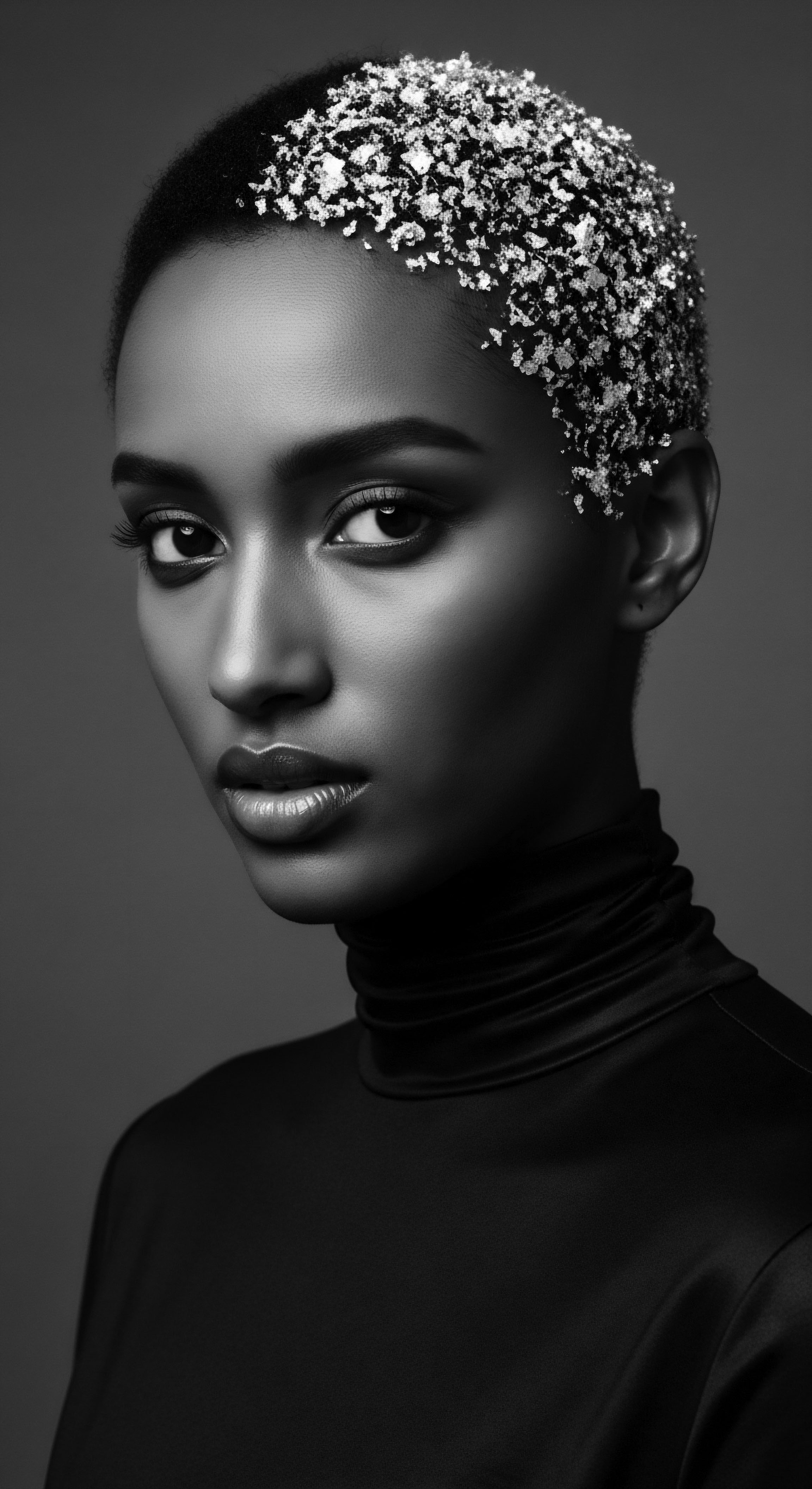
Academic
The ‘Hair Culture’ represents a complex, multi-layered construct, extending beyond individual preference to encompass a profound interplay of biological, historical, anthropological, psychological, and socio-economic forces, particularly within the context of textured hair, Black hair, and mixed-race hair heritage. From an advanced perspective, Hair Culture is a dynamic system of meaning-making, a deeply embodied form of communication, and a site of continuous negotiation between inherited wisdom and contemporary realities. It functions as a living archive, where each strand carries the weight of history, the resilience of generations, and the aspirations for future self-determination. This comprehensive explication seeks to delineate its full significance, revealing its expert-level implications for understanding identity, community, and resistance.

The Helix as a Chronicle ❉ Hair as Biological and Cultural Text
At its most fundamental, hair possesses inherent biological properties that dictate its behavior and care requirements. Textured hair, characterized by its elliptical follicle shape and varied curl patterns (from wavy to tightly coiled), presents unique challenges and advantages. These structural differences influence moisture retention, susceptibility to breakage, and styling capabilities.
The scientific understanding of these attributes validates many traditional care practices that intuitively addressed the hair’s specific needs for hydration, gentle handling, and protective styling. The recognition of hair as a biological text, encoded with ancestral genetic information, allows for a deeper appreciation of its natural state.
From a cultural standpoint, hair transcends its biological function to become a symbolic language. Its manipulation, adornment, and presentation serve as non-verbal communication, signaling identity, social status, marital standing, age, and even spiritual beliefs within various African societies. This semiotic function transformed hair into a living chronicle, capable of conveying intricate narratives without uttering a single word. The specific patterns of braids, the placement of adornments, or the ritualistic shaving of hair each held specific communal meaning, reflecting a sophisticated system of cultural literacy.
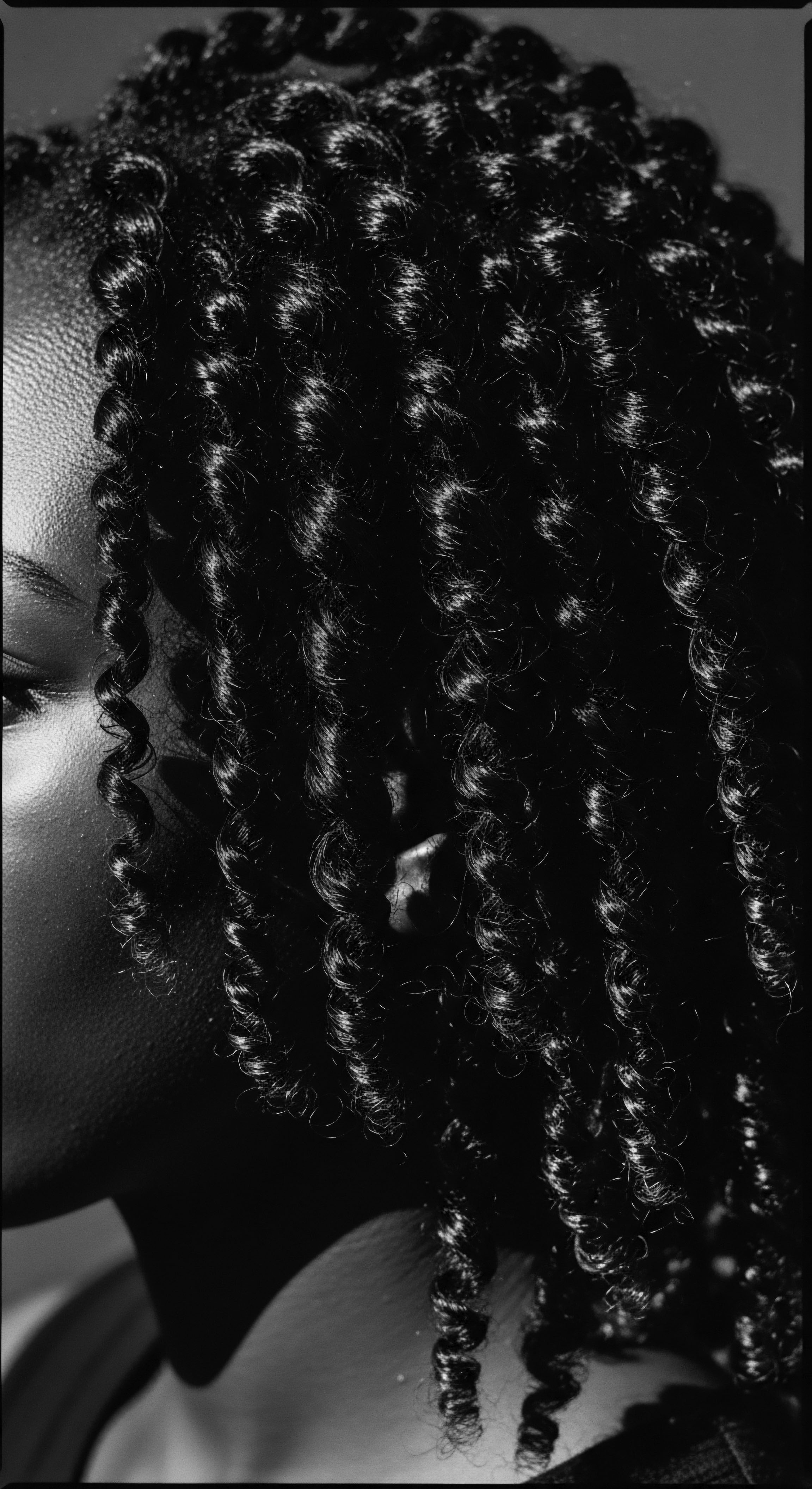
Semiotics of the Strand ❉ Hair as a Language of Identity, Resistance, and Aspiration
The Hair Culture, particularly for Black and mixed-race individuals, operates as a potent semiotic system. It functions as a visible declaration of self, a rejection of oppressive norms, and a powerful expression of collective heritage. The historical subjugation of Black hair, often deemed “unruly” or “unprofessional” by Eurocentric standards, directly correlates with systemic racism and the dehumanization experienced during slavery and its aftermath. The forced shaving of heads upon arrival during the transatlantic slave trade aimed to strip individuals of their cultural identity and sever their connection to their past.
Yet, through generations, Black communities reclaimed their hair as a site of profound resistance. The act of wearing natural styles, such as the Afro during the Civil Rights and Black Power movements, represented a radical affirmation of Black identity and a direct challenge to the prevailing beauty hierarchy. This was not merely a fashion trend; it constituted a political statement, a visual protest against racial discrimination, and a powerful symbol of self-love and collective solidarity.
The cultural and economic resilience surrounding Black hair care also speaks to its profound significance. Historically, when mainstream industries ignored the specific needs of textured hair, Black entrepreneurs, primarily women, stepped in to create their own solutions. This created self-sufficient economies within Black communities. For instance, in the early 20th century, amidst widespread racial discrimination and limited opportunities, Black women built a thriving beauty culture industry.
By 1920, the National Negro Business League reported that Black women owned 20,000 beauty parlors and employed over 100,000 women, demonstrating a remarkable degree of economic self-reliance and community building rooted in hair care (Bundles, 2001). This historical data underscores how Hair Culture was not only a means of personal expression but also a significant driver of economic empowerment and community development, often operating outside dominant economic structures. This entrepreneurial spirit, born from necessity and rooted in cultural understanding, continues to shape the textured hair care market today.

Decolonizing the Crown ❉ Challenging Eurocentric Beauty Standards
The academic lens on Hair Culture reveals its critical role in decolonizing beauty standards. Eurocentric ideals of straight, smooth hair have historically been positioned as the universal norm, leading to the marginalization and stigmatization of textured hair. This imposition has had deep psychological impacts, contributing to issues of self-esteem and identity conflict among Black and mixed-race individuals.
The contemporary Natural Hair Movement, a resurgence of the 1960s wave, represents a collective effort to dismantle these oppressive standards. It encourages individuals to embrace their natural hair texture, recognizing its inherent beauty and cultural value. This movement extends beyond individual choice; it seeks to reshape societal perceptions, challenge discriminatory practices in workplaces and schools (as exemplified by legislative efforts like the CROWN Act), and celebrate the diversity of textured hair as a source of pride. The movement aims to normalize natural hair, allowing it to be seen as professional, beautiful, and acceptable in all spaces, thereby asserting cultural autonomy and decolonizing aesthetic norms.
The Hair Culture for textured hair embodies a powerful language of identity, resistance, and self-affirmation, constantly challenging imposed beauty standards.

Future Weaving ❉ Hair Culture’s Role in Future Wellness and Preservation
Looking ahead, the Hair Culture continues to evolve, weaving ancestral wisdom with contemporary advancements. This ongoing dialogue shapes future approaches to hair wellness, technological innovation, and cultural preservation. Scientific research increasingly validates the efficacy of traditional ingredients and practices, bridging ancient knowledge with modern understanding. For instance, studies on the benefits of natural oils and protective styles align with centuries-old African care rituals, confirming their role in maintaining hair health.
The Hair Culture also plays a vital role in mental and emotional wellness. The act of self-care through hair rituals can be a meditative and grounding practice, connecting individuals to their heritage and fostering a sense of self-acceptance. For many, caring for textured hair is a conscious act of honoring their ancestors and reclaiming a lineage of beauty that was once suppressed. This connection contributes to overall well-being and a stronger sense of identity.
- Intergenerational Knowledge Transfer ❉ Continued efforts to document and transmit traditional hair care practices ensure that ancestral wisdom is not lost but adapted for new generations. This includes oral traditions, communal styling sessions, and educational initiatives.
- Ethical Product Development ❉ A growing demand for products that honor textured hair heritage drives innovation rooted in natural, ethically sourced ingredients, often inspired by traditional African botanicals. This supports both hair health and sustainable practices.
- Advocacy and Policy Change ❉ Ongoing advocacy for hair discrimination legislation, such as the CROWN Act, ensures legal protection for individuals choosing to wear their natural hair, creating more inclusive environments in education and employment.
- Digital Archiving and Storytelling ❉ Online platforms and social media serve as contemporary spaces for sharing hair journeys, tutorials, and historical information, creating a digital living library that celebrates the diversity of textured hair experiences globally.
The academic examination of Hair Culture thus reveals its enduring significance as a dynamic, multifaceted phenomenon. It stands as a testament to the power of hair not merely as a physical attribute but as a profound expression of heritage, a vehicle for social change, and a continuous source of identity and pride for Black and mixed-race communities worldwide.

Reflection on the Heritage of Hair Culture
The journey through the intricate layers of Hair Culture, particularly as it pertains to textured hair, reveals a narrative far richer and more profound than a simple discussion of styling. We observe a living, breathing archive, where each coil, kink, and curl holds the echoes of ancient wisdom and the spirit of generations past. The ‘Soul of a Strand’ ethos reminds us that hair is not separate from the self; it is an extension of our deepest roots, a tangible connection to our ancestral lineage. This exploration has underscored how the Hair Culture, especially within Black and mixed-race experiences, has served as a resilient beacon of identity, a canvas for storytelling, and a silent, yet powerful, act of defiance against historical erasure.
From the communal hands that first braided patterns signifying status and belonging in ancient Africa, to the ingenious acts of resistance that transformed oppressive laws into symbols of beauty in the diaspora, Hair Culture consistently asserts its profound meaning. It speaks to the enduring human need for self-expression, for connection, and for the preservation of heritage in the face of adversity. The ongoing celebration of natural textured hair today is not merely a trend; it is a conscious return to self, a reclamation of a legacy that was long suppressed, and a vibrant affirmation of inherent beauty. This understanding of Hair Culture offers a path toward deeper self-acceptance and a more compassionate appreciation for the diverse expressions of human heritage, ensuring that the stories woven into every strand continue to inspire and affirm for generations to come.

References
- Bundles, A. P. (2001). On Her Own Ground ❉ The Life and Times of Madam C. J. Walker. Scribner.
- Byrd, A. D. & Tharps, L. L. (2001). Hair Story ❉ Untangling the Roots of Black Hair in America. St. Martin’s Press.
- Dabiri, E. (2019). Don’t Touch My Hair. Penguin Books.
- Gould, V. M. (1996). The Free Creoles of Color of New Orleans ❉ An Introduction. In Creoles of Color of New Orleans ❉ Race and Community, edited by Arnold R. Hirsch and Joseph Logsdon. Louisiana State University Press.
- Long, C. (2007). A New Orleans Voudou Priestess ❉ The Legend and Reality of Marie Laveau. University Press of Florida.
- Patton, T. O. (2006). African-American Hair as a Communicative Practice ❉ An Ethnographic Study. Howard Journal of Communications, 17(4), 329-348.
- Rooks, N. M. (1996). Hair Raising ❉ Beauty, Culture, and African American Women. Rutgers University Press.
- Thompson, C. (2009). Hair in African Art and Culture. Museum for African Art.
